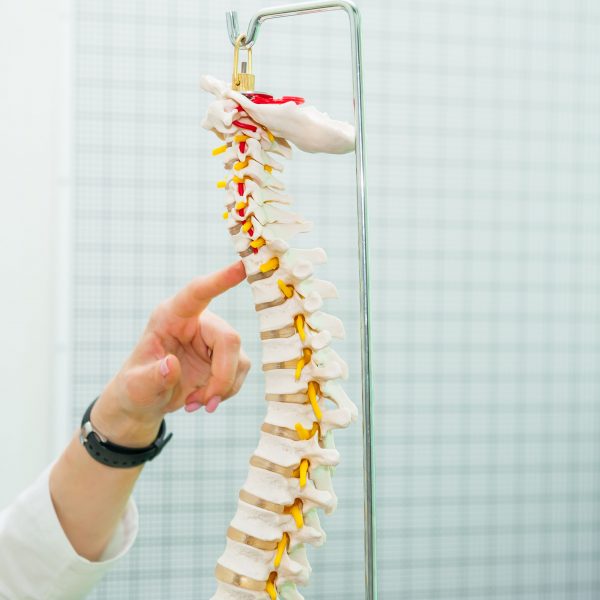- Chronic lower back pain can significantly affect daily life and well-being.
- Correcting posture, stretching, and strengthening core muscles can help manage pain.
- Mindfulness and stress reduction techniques are also effective in reducing pain.
- Ergonomic furniture and incorporating physical therapy into treatment plans can provide relief.
- Consulting with healthcare professionals is crucial for personalized advice and guidance.
Dealing with chronic lower back pain can be a challenging and frustrating experience. It can significantly affect your daily activities, mobility, and overall quality of life. However, various tips and techniques can help you manage and alleviate chronic lower back pain without surgery or medication. This guide will explore five effective strategies for managing chronic lower back pain and improving well-being.
1. Posture Correction
Maintaining proper posture throughout the day is crucial for managing lower back pain. Poor posture can put unnecessary strain on your back muscles and exacerbate pain.
Here are some tips on how to correct your posture:
The Importance of Proper Posture
Maintaining good posture not only helps with managing lower back pain, but it also has several other benefits. Good posture can improve overall body alignment and reduce muscle tension, improving balance and coordination. It can also make you appear taller and more confident, positively impacting your self-esteem.
Making an effort to correct your posture can also prevent future back problems from arising. Poor posture can cause imbalances that strain certain muscles and joints, leading to chronic pain or injuries.
Techniques for Correcting Posture
You can use several techniques throughout the day to improve your posture. One easy way is to imagine a string pulling the top of your head towards the ceiling, keeping your neck and spine aligned. Another technique is to sit on a stability ball instead of a chair, forcing you to engage your core muscles to maintain balance.
You can also try incorporating posture correction exercises into your daily routine. These may include stretches and strengthening exercises that target the muscles responsible for maintaining good posture, such as the abdominal and back muscles.
Choosing the Right Furniture
Investing in ergonomic furniture can greatly aid in correcting and maintaining good posture. Ergonomic chairs are designed to provide proper support for the spine, helping you sit with a neutral posture. Look for chairs with adjustable lumbar support, armrests, and a seat allowing your feet to rest comfortably on the ground.
Using supportive cushions can also make a difference in your posture. Place a lumbar cushion behind your lower back while sitting, and use a neck pillow while sleeping to keep your spine aligned.
Practicing Mindfulness
Being mindful of your posture throughout the day is key to correcting it. Try to check in with yourself periodically and adjust your posture if needed. Setting reminders or using posture-correcting apps that track your sitting and standing habits may also be helpful.
Additionally, incorporating yoga or Pilates into your routine can help improve body awareness and strengthen the muscles needed for good posture. These activities also promote relaxation and stress management, which can indirectly benefit posture by reducing tension in the body.
2. Stretching and Flexibility Exercises

Regular stretching and flexibility exercises can help relieve tension and stiffness in your lower back muscles. Incorporate gentle stretches into your daily routine, focusing on the muscles surrounding your lower back. Simple exercises such as knee-to-chest stretches, hamstring stretches, and pelvic tilts can provide significant relief. Consult with a physical therapist or healthcare professional to learn specific exercises tailored to your needs.
3. Strengthening Your Core Muscles
Strengthening your core muscles stabilizes your spine and reduces lower back pain. Weak core muscles can contribute to poor posture and instability, increasing discomfort. Engage in exercises that target your abdominal muscles, back extensors, and obliques. Planks, bridges, and bird-dog exercises are some examples of practical core-strengthening exercises. Start gradually and consult a professional if you have any underlying conditions.
4. Mindfulness and Stress Reduction Techniques

Chronic lower back pain is often associated with stress and tension. Practicing mindfulness and stress reduction techniques can help you manage pain more effectively. Deep breathing exercises, meditation, and yoga can promote relaxation and reduce muscle tension. Additionally, engaging in activities that bring you joy and help you unwind, such as hobbies or time in nature, can positively impact your overall well-being.
5. Incorporating Physical Therapy
Incorporating professional physical therapy into your treatment plan can be highly beneficial for managing chronic lower back pain. A physical therapist can assess your condition, identify specific areas of weakness or imbalance, and develop a personalized exercise program to alleviate pain and improve function. Physical therapy may include stretching, strengthening exercises, manual therapy, and other modalities to target the root cause of your pain.
Final Words
Dealing with chronic lower back pain requires a holistic approach that combines various strategies. You can effectively manage and alleviate chronic lower back pain by correcting your posture, engaging in regular stretching and flexibility exercises, strengthening your core muscles, practicing mindfulness, and incorporating physical therapy. Remember to consult healthcare professionals for personalized advice and guidance tailored to your needs. With dedication and perseverance, you can regain control of your life and enjoy improved comfort and mobility.






